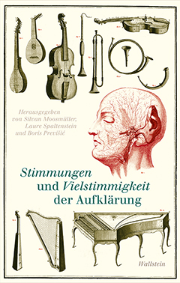Subject to the mood
Even today, "tuning" has the double meaning of intonation and mood. This anthology reveals that these two meanings were also much closer in music than we think today. And much more.

Once again, of course, everything is much more complex than is commonly portrayed. Nothing about the well-tempered system solving the old problems of tuning - or even partially solving them. The discussion continued for the time being. At the same time as Bach was composing his famous cycle, Telemann in Paris was experiencing that intonation was somewhat more complicated and that a differentiated enharmonic way of singing hurt the ears, but still sounded "exquisitely sweet". "A beautiful contradiction. You have to open your tame ears a little wider." [Once again, this is a wonderful example of how cosmopolitan and curious this still somewhat misunderstood man was - and also of what the enlightened 18th century had in mind when it spoke of moods and suchlike: not only accurate and smooth intonation, but also emotion, decency, language, physiology and philosophy.
A whole field opens up behind this. It is now broken down in this anthology, which explores the moods and polyphony of the Enlightenment (and sometimes even a little further into the present day, to Hermann Burger, for example). The three editors are currently working on these "musical paradigms in literature and culture" under Boris Previšić's professorship at the University of Lucerne as part of a National Fund research project. The nineteen essays, which were written in September 2016 on the occasion of an interdisciplinary conference on this topic, are highly informative, if not always equally easy to read (the editors in particular like to epistemologize a little). They are aimed at a specialist audience; the interested layperson will pick out one or two texts, but it is well worth wandering through this topic and getting to know the different facets: how views changed in Rameau or Herder, for example, what the relationship was between theory, practice - and today's practice (!) or that Wilhelm Heinse, for example, in his novel Hildegard von Hohenthal dealt with it. Mood as intonation or as whimsy: this was closer than we understand it today. And so Heinse says: "Nature has prepared itself to float away eternally blissful in new feelings; and our original vocation is to recognize this and to be happy. Pythagoras was quite right, the world is music."
Moods and polyphony of the Enlightenment, edited by Silvan Mossmüller, Laure Spaltenstein and Boris Previšić, 389 p., € 39.00, Wallstein, Göttingen 2017, ISBN978-3-8353-3075-7








